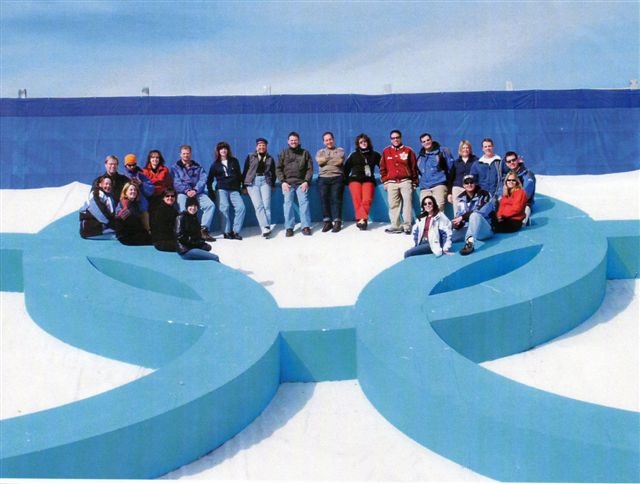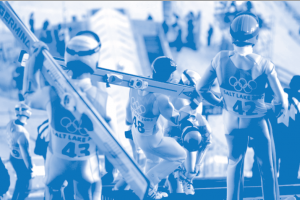I spent the weekend in Utah; most of my time was in Park City, but some in Salt Lake City. It has been 13 years since I was last there and it, like me, has changed. There are however, some thing’s that are the same.
I lived in Salt Lake City to work for the 2002 Winter Olympic & Paralympic Games. I was employed as the Project Manager for the Look of the Games functional area. I didn’t know it when I moved there, but it would be the place where I did some of my best work, and a place that quickly became my home. I was happy, content, and at peace living in Salt Lake City. I was in my early 30’s, finally living alone after having cohabitated with about 30 different roommates in 12 years. I had always lived in places or houses where people came and went, moved in and moved out. I was ready for my own space.
What ended up happening for me, and maybe others, was an incredible opportunity to develop and work with a high performance team. We grew from individuals to the ‘Look of the Games’ team. It took the better part of a year but we began to function like a well-oiled machine.
Proof of the strong bonds developed are seen today, in the many relationships, and now friendships, many of us hold dear. A lot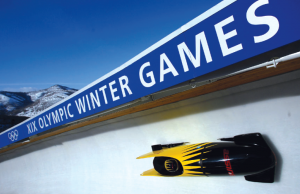 of life can happen in 14 years and for some of us, we have wound each other into our worlds and families since that fateful meeting in 2001. I am most grateful for this.
of life can happen in 14 years and for some of us, we have wound each other into our worlds and families since that fateful meeting in 2001. I am most grateful for this.
I am a qualified speaker and trainer on leadership. I use the example of our team in Salt Lake a lot, some might say constantly. I don’t want to be misleading; it was not all rainbows and unicorns. It was, however, magical, and hard, emotional, and crazy-making incredible, beautiful, and challenging. I am certain I remember some thing’s more fondly than they deserve, but I am also certain that our team, our entire team, was comprised of people who had good hearts, good intentions, and good work ethics. Maybe we built that? Maybe we just were that to begin with and our bandwagon had finally arrived?
Since 2002, I have taken an interest in high performing teams. Their development, their function, their challenges, and how they win. I find them fascinating. As my knowledge of high performing teams improved I realized that our team in Salt Lake, and perhaps the entire Salt Lake Organizing Committee, were actually a high performing teams.
Our Look Team did not start that way; in fact, we began quite divided, and quite siloed. As the months grew on, some spent time together outside of the office, but it wasn’t a constant share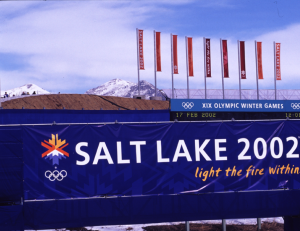 d spare time. And I, actually, rarely went out with the team. As part of the functional area management I felt I needed to keep those socializing boundaries in place, because it made my ability to lead easier, and their ability to follow easier. It was not about hierarchy, it was about ensuring I was in the best state to serve them. And it worked.
d spare time. And I, actually, rarely went out with the team. As part of the functional area management I felt I needed to keep those socializing boundaries in place, because it made my ability to lead easier, and their ability to follow easier. It was not about hierarchy, it was about ensuring I was in the best state to serve them. And it worked.
Here is a list of 10 characteristics of a high performing team, let’s see how our SLOC Lookers measured up:
- High performing teams have solid and deep trust in each other, and in the shared purpose.
- As mentioned, we did not start here, we grew here. Check.
- People feel free to express feelings and ideas.
- They certainly seemed to, and we encouraged it and I hope they felt like we embraced it. Check.
- Everybody is working toward the same goals.
- The delivery of the best Olympic Look Program. Check.
- Team members are clear on how to work together and how to accomplish tasks.
- Not at first, but we evolved into this; which took time, knowledge, patience and respect. Check.
- Not to the degree that someone could necessarily replace another person, but we had enough shared knowledge that we knew who did what, why, and when. We did police each other, some better than others. 😉 Check.
- Team members actively diffuse tension and friction in a relaxed and informal atmosphere.
- Diffuse might be a bit lofty, there was definitely tension and friction, and fights. Our atmosphere grew more informal as the Games grew closer, and even though we fought, we made up and kept moving towards our goal. Check.
- The team engages in extensive discussion, and everyone gets a chance to contribute — even the introverts.
- My interpretation is that everyone had a voice and everyone contributed. There is no way to pull any of this off without a team of people. Because of our shared goal and shared passion for that goal, I believe a lot of personal agendas, wants, needs and maybe even issues, were shelved so we could succeed, so we would succeed. My recollection is that no one was afraid to speak up. Check.
- Disagreement is viewed as a good thing and conflicts are managed. Criticism is constructive and is oriented toward problem solving and removing obstacles.
- Again, as we moved closer to the Games our focus became so indelible that our concern for our shared goal trumped anything that might have been offensive in earlier times. We did not permit disrespect or personal attacks, nor should you, ever. That’s not to say they didn’t happen,
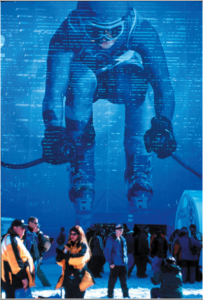 we just corrected that behaviour when it did. We cared more about the collective good than our personal good. I don’t remember shying away from conflict or disagreement. I do remember having some hard conversations. But hard doesn’t mean bad, it just means hard. Check.
we just corrected that behaviour when it did. We cared more about the collective good than our personal good. I don’t remember shying away from conflict or disagreement. I do remember having some hard conversations. But hard doesn’t mean bad, it just means hard. Check.
- The team makes decisions when there is natural agreement — in the cases where agreement is elusive, a decision is made by the team lead, after which little second-guessing occurs.
- Our decisions were not necessarily by committee, the SLOC leaders and our function leaders determined our general direction. Our group did talk things through; for example my operations team visited the Utah desert to test installation techniques believing if we could make it work in sand, we could make it work in snow. We were right. That was a collaborative effort, and we approached many things in a similar fashion. Check.
- Each team member carries his or her own weight and respects the team processes and other members.
- And when we didn’t someone else carried it for us. Check.
- The leadership of the team shifts from time to time, as appropriate, to drive results. No individual members are more important than the team.
- I believe this actually happened. When I started studying high performing teams this didn’t make sense to me, but when I think about my boss, Bob I see th
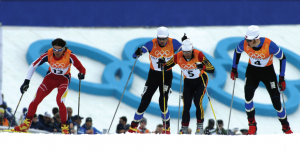 at it did shift as it needed to, and that our team understood how it worked. It definitely made us more efficient. I believe they saw Bob and I as a team and the design leads as a team and accepted the shifts as they occurred. Check.
at it did shift as it needed to, and that our team understood how it worked. It definitely made us more efficient. I believe they saw Bob and I as a team and the design leads as a team and accepted the shifts as they occurred. Check.
I am very open with my adoration for the Salt Lake Olympics and the team of people I worked with during that time. There are so many reasons I loved that experience – personal and professional. I have a collection of great memories from that set of Games. And more importantly, I have a collection of great great friends from that set of Games.
Friends who remind me of that 30 something girl with fire in her belly – friends who today – lift me up, help me, listen to me, make time for me, include me, and accept me. They may even love me.
We became a family of sorts, looked out for, and after, each other. We had pride in doing our jobs. We each had a vested interest in the success of our department, for different, and some same reasons. And ultimately we had a common vision of delivering the best Look program ever, and nothing was going to shake us loose.
I don’t believe I will ever have another experience like I did in Salt Lake City some 14 years ago, but I do believe I can have something different, not better, but perhaps different and equal. Who knows where that light will shine and where this Canadian girl will end up…I’m banking on a place filled with spectacular people.

